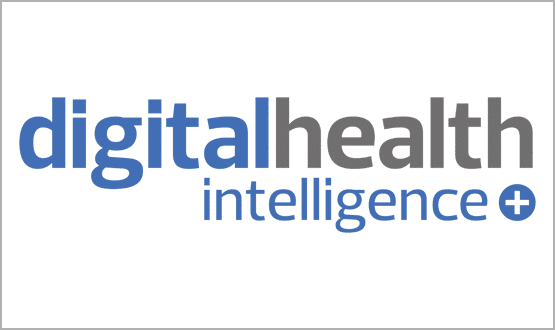Is this what good looks like?
- 16 September 2021

Last month NHSX published its new digital blueprint, rather enigmatically titled What Good Look Like – so what does this mean for healthcare IT?
The long-awaited guidance is intended to provide what NHSX CIO Sonia Patel has described as a ‘north star’, a map for NHS organisations and the new integrated care systems (ICSs) to develop future digital strategies.
The What Good Looks Like (WGLL) framework sets out expectations of digital transformation at both organisational and system level. It emphasises the role of ICSs as the locus of decision making on digital strategy and related investment decisions, something of a major break from the main focus of digital strategy being placed on trusts.
But anyone expecting something immediately usable, such as templates, self-assessment tools or a set of common maturity measures for developing their local digital strategy, is likely to be disappointed by a lack of specifics and detail initially available.
WGLL as a starting point
On initial reading, the WGLL guidance is fairly thin. Hopefully, more will follow over time and indeed this will be sign-posted – though there doesn’t seem to be a timetable for this. Hopefully, the evolution of WGLL will be framed as a dialogue with local NHS leaders.
The critical importance of articulating digital strategy and clearly communicating it to the wider service, and then aligning investment, performance, outcomes and regulatory measures cannot be under-stated. In addition, past lessons – from both successes and failures – must be learned.
Avoiding mistakes of the recent past
The WGLL framework aims to set a benchmark for good practice in digital services for the future, but fails to address past mistakes in the health service, something several high profile reviews have recommended.
It is not an inspiring rallying call to actions with a specific menu of priorities in the way that the Wachter report was.
Although developed in different circumstances, in many ways WGLL compares unfavourably with the commendably specific action plan and recommendations provided by Bob Wachter and his review team five years ago. Significantly, his review was high profile, independent, collected evidence and didn’t duck from making difficult choices around recommendations.
Wachter was trying to answer the same question as WGLL: how to accelerate the digitisation of the NHS? His report and recommendations were remarkably independent, though the focus was then almost exclusively on hospitals.
The review also specifically sought to learn lessons from the experience of past NHS IT initiatives to avoid previous mistakes. Curiously, WGLL has almost nothing to say on the past.
Wachter’s key conclusions were that trusts were at very different states of readiness and that priority investment should be given to those that were most advanced, with further waves of funding to follow to those less ready.
This key analysis informed the rest of the strategy. But there is no comparable analysis underpinning WGLL, and the underlying message is that the state of digital maturity remains variable across the NHS.
Similarly, in its scathing May 2020 report on NHS digitisation, the National Audit Office (NAO) noted the health service had failed to deliver previous digitisation goals, first the NPfIT [National Programme for IT] and subsequently Paperless NHS, and continued to lack clear plans, governance, and accountability.
“For current efforts to be successful, it will be essential to avoid previous mistakes”, the report stated.
Measuring digital maturity was one key recommendation of the NAO report, while another was to systematically learn lessons from past programmes, including sharing evidence and knowledge on implementation experience.
“While some high-level lessons were identified in the Wachter Review (2016), we have not seen evidence that the lessons of this and other programmes have been captured systematically,” the report stated.
“In our view, significant risks to successful implementation remain in all areas.”
Casting the net too wide?
The NHSX guidance initially sets out a broad-brush set of aspirational guidelines for good digital practice and outlines seven success measures that should inform digital strategies.
They are:
- Well led
- Ensure smart foundations
- Safe practice
- Support people
- Empower citizens
- Improve care
- Healthy populations
The areas are sensible and it is difficult to disagree with what has been laid out, but there is a concern that WGLL, as initially published, is too top level and unlikely to be used immediately.
Part of the reason it’s so top level is that the guidance casts the net pretty wide, stating that it is aimed at “all NHS leaders, as they work with their system partners, and sets out what good looks like at both a system and organisation level”.
One Digital Health source, an academic, welcomed the shift in focus: “I think it’s a good start. Its different to know how they could have been anything other than very high level, given where ICSs are so far”.
The risk of casting the net so wide is that the guidance becomes rather superficial but if you dig into the detail there is still plenty to cheer, such as the repeated call for CCIO and CIOs on boards (though CNIOs are again distant cousins).
Knowing the origins
The guidance also appears to be lacking any clear provenance. There have been consultations with system leaders, but the guidance gives no indication of what the knotty problems have been, what different views have been weighed up, and whether they have sought to be reconciled.
Most strikingly there is absolutely no guidance prioritisation offered, or recommendations on what sequence of steps should be. All aspects of WGLL are instead presented as equally urgent.
In a blog accompanying the guidance, Patel reminds everyone that “the digital maturity of organisations across the country remains varied.” Which is surely true, though we lack reliable measures of this variability.
“At NHSX we want to support every local health and care organisation to digitally transform so that no patient or member of healthcare staff is left behind, and digital progress continues,” Patel added.
A commendable aim but how will this link into the messy reality of health and care? The problem of course is that health is not just variable, but hugely complex.
Where next of digital maturity measures?
So, how to benchmark or measure maturity or progress in the new world of ICSs? Few clues are given on how this may be done other than “an assessment framework for organisations to measure their level of digital maturity”.
This is promised for an unspecified future date, though in a HSJ interview NHSX chief executive Matthew Gould suggested he hoped elements would be in place by the end of the year, and it would be designed to avoid gaming.
The new digital maturity assessment will “identify gaps and prioritise areas for local improvement”, with assessments tracking progress year-on-year.
This won’t be the abandoned Digital Maturity Assessment, carried out by NHS England in 2016 and 2017, that helped inform the selection of Global Digital Exemplar and Fast Follower trusts, but rather a “next generation” version of the assessments taking into account culture as well as technology.
Digital aspirants
Following the GDE programme NHSX launched its Digital Aspirant project, which aims at helping trusts further their digital capabilities.
It’s never been made clear how the 60 organisations that have so far received funding from the Digital Aspirant programme were selected, or prioritised, by NHSX. There has also been very little mention of how benefits of the investments are to be measured, or lessons and best practice shared.
By contrast, the GDE programme narrowly focused on the most advanced provider trusts and required them to jump through hoops to reach level 6 and 7 of HIMSS EMRAM. The HIMSS measure, while not perfect, was understood and well established.
Benchmarking and developing digital maturity measures takes time, often years, to gradually evolve and finally become useful, requiring a patience rarely possessed by restless ministers and policy makers.
Digital benchmarks need time to mature
If WGLL, and the accompanying financial model Who Pays for What [already commonly known as ‘Who Prays for What’], are to develop and become more useful they will need to get more specific and evolve.
Policy makers should resist calls from management consultants to develop ever more new measures, but instead only use proven tools and measures that already exist and are in use, even if they are imperfect. Priority must be given to locally developed tools that have been developed by experienced NHS professionals based on their hard-won experience.
Who is the audience for WGLL?
Perhaps the real problem of WGLL is that it is not entirely clear who it is for. The opening line says it’s for all NHS leaders, but who is it meant to be read by to become their ‘north star’?
On the one hand it appears to be a punchy 5-minute primer of digital strategy essentials for CEOs and board members, but on the other it aims to be an over-arching and unifying framework for developing and implementing local ICS digital strategy for those experienced local IT leaders at the coal face.
It’s an unenviable balancing act that NHSX have sought to pull off, but the danger is that for the first audience it’s probably too detailed; while for the second it’s not nearly detailed enough.
How it develops over the coming months will be key to determining how successful the guidance proves.





1 Comments
I agree with the comments made, it is just yet another document with no real direction or meat on the bones. A follow up to Wachter would be more useful (where are we now, what has and has not been done). Not sure who writes this stuff but really they need to get closer to the coalface!
Comments are closed.